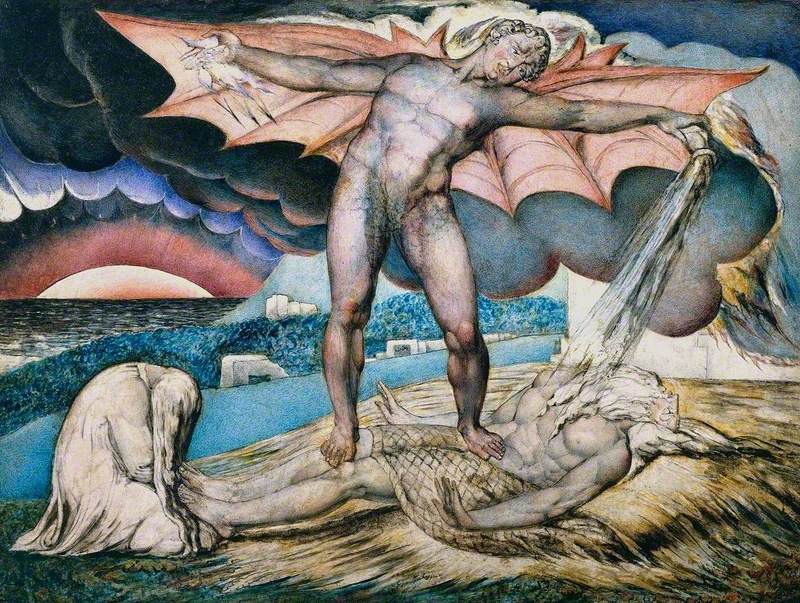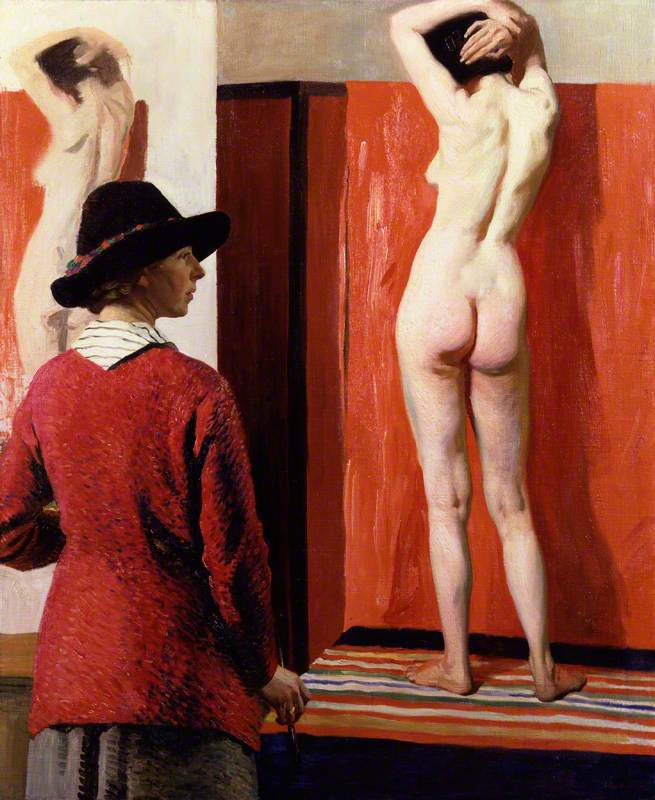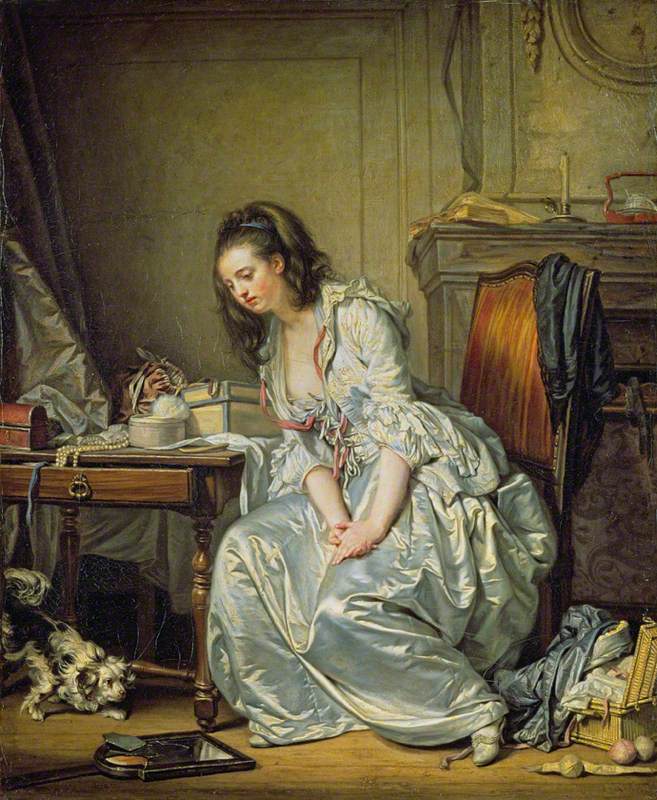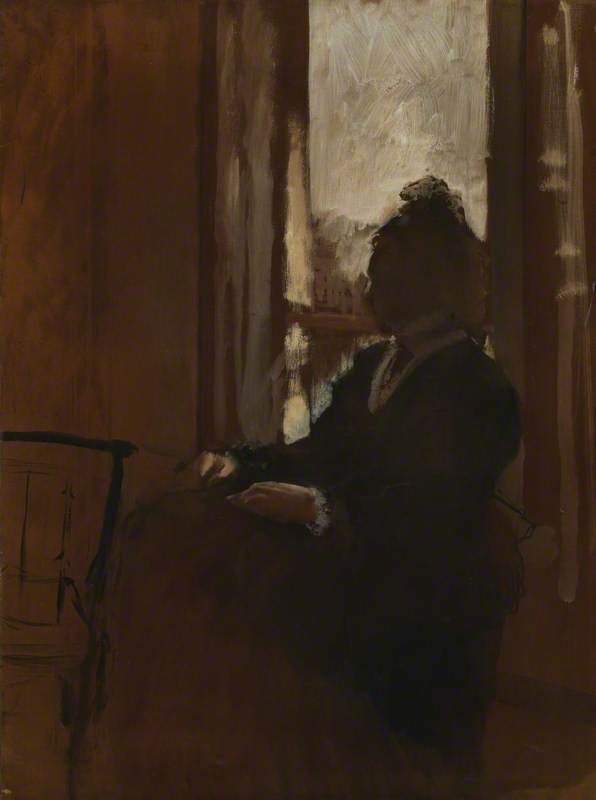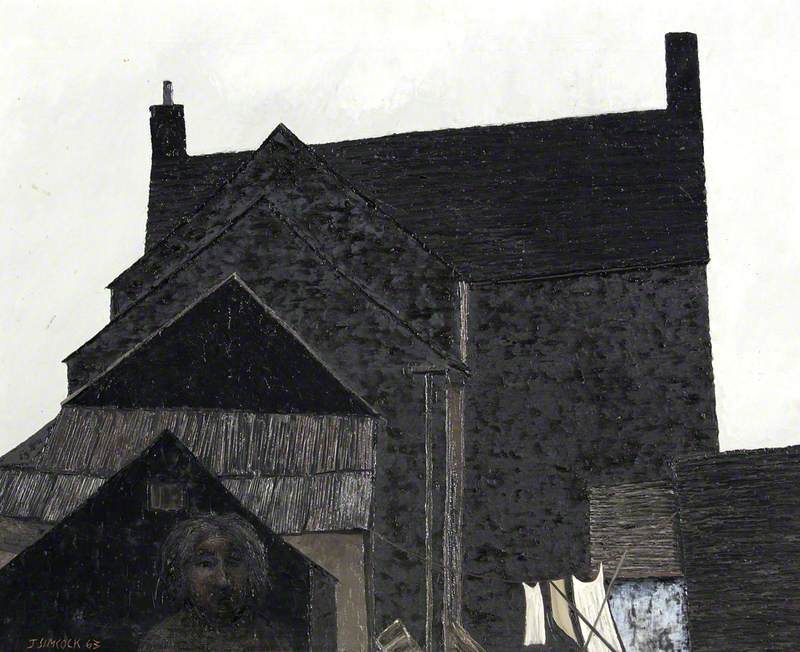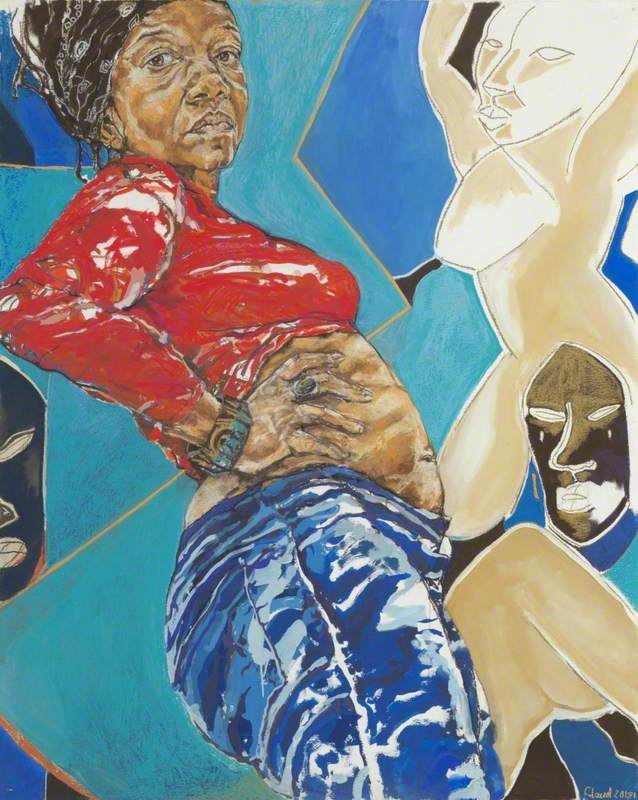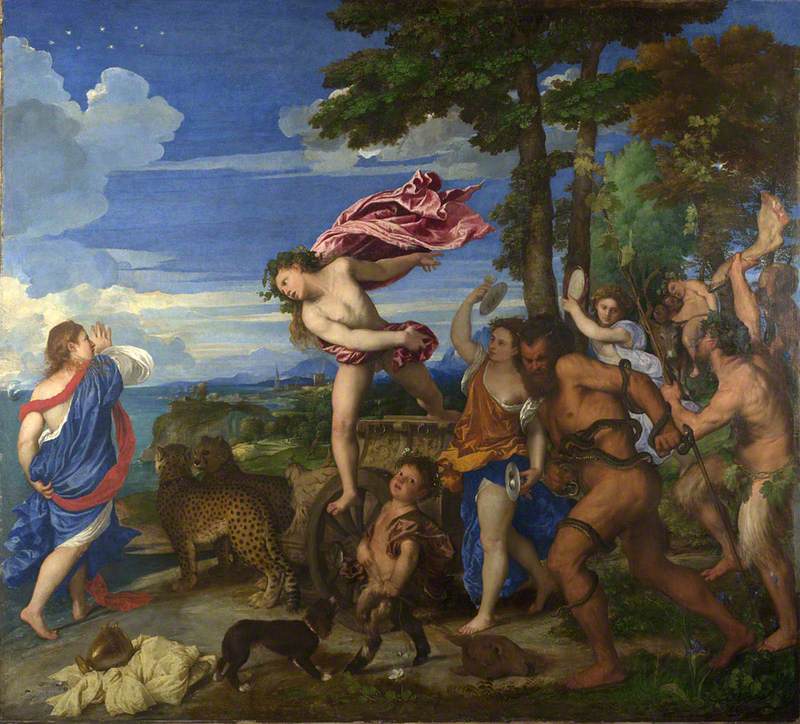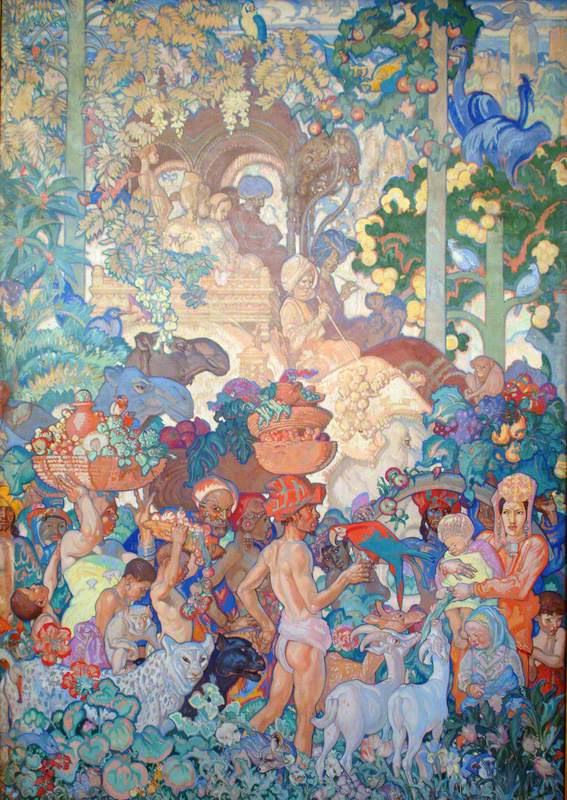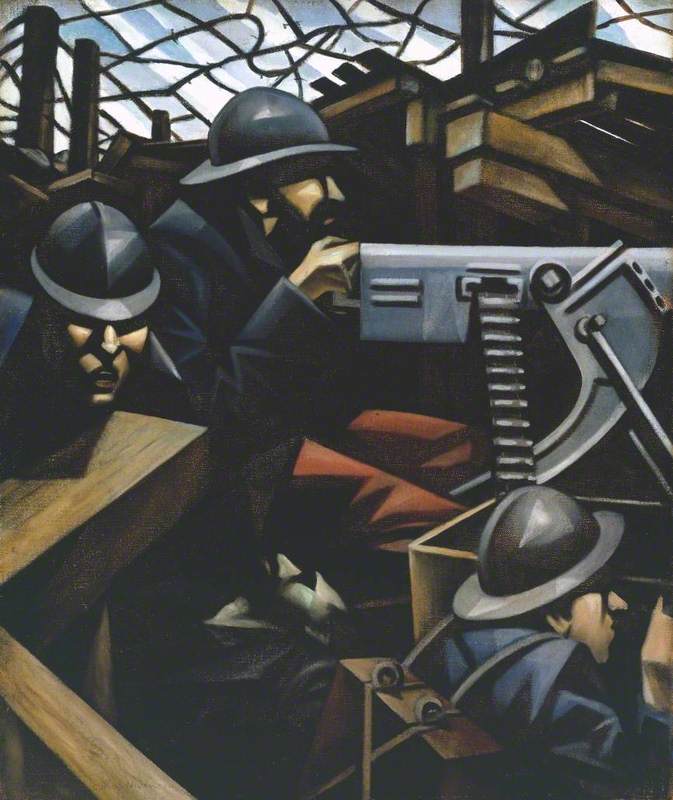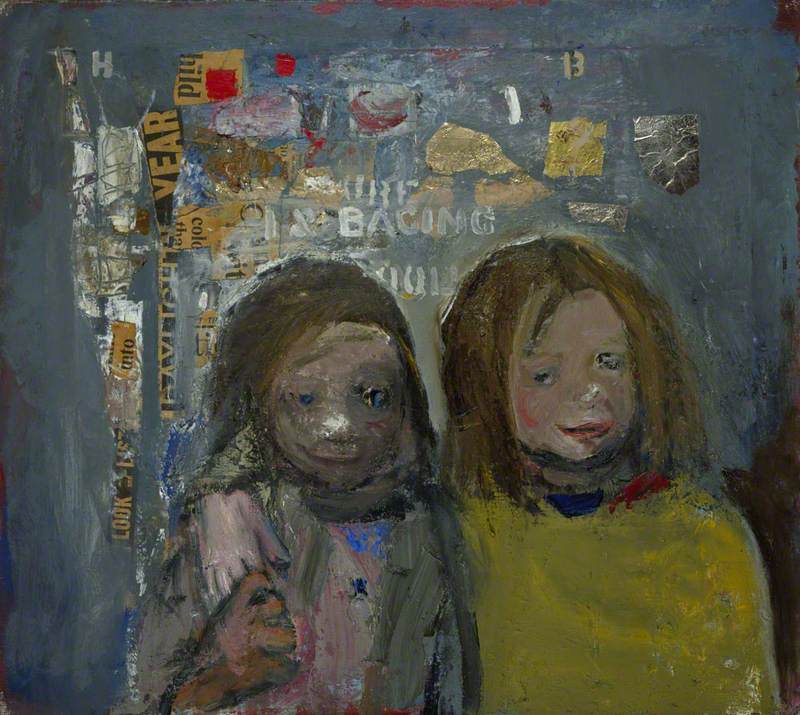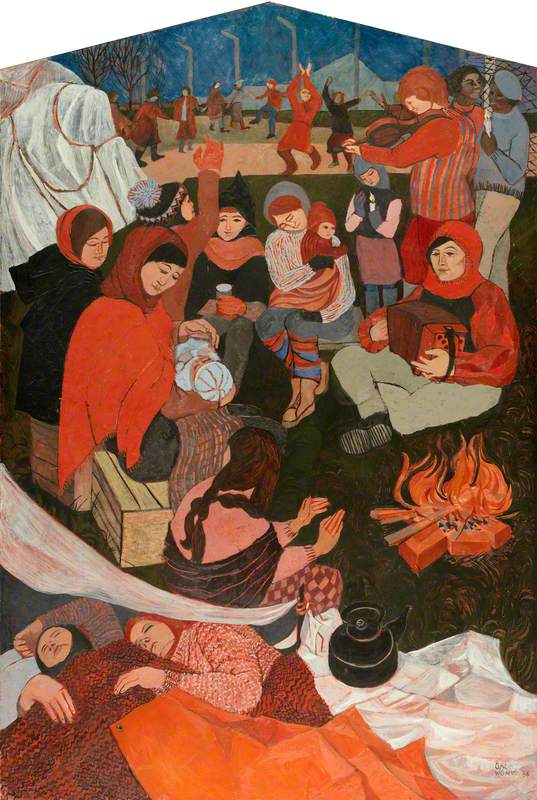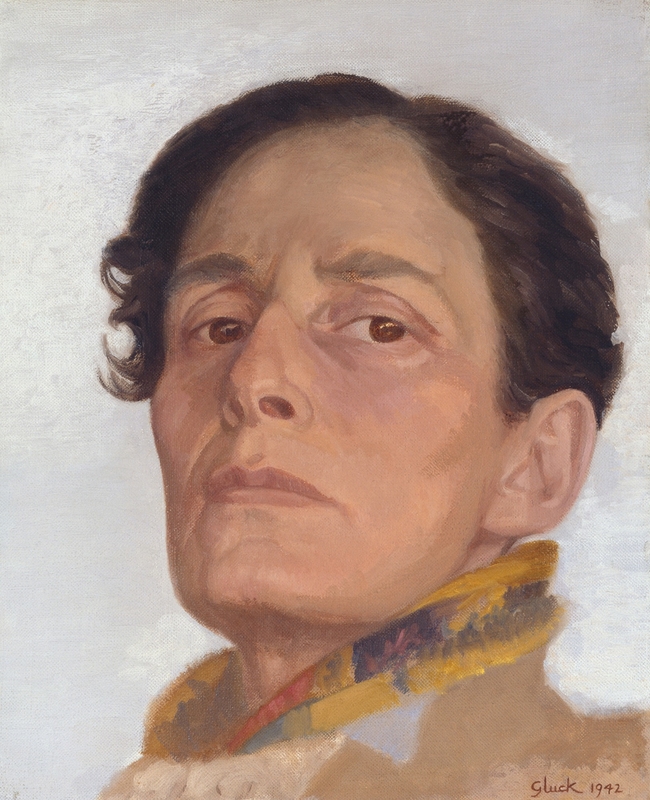Anthony Green portrays the fine line between pleasure and pain in his painting My Mother Alone in Her Dining Room. He creates a paradox of colours, offsetting the luxurious shades of green with sickly yellow undertones. It is as if to say, 'money can't buy you happiness'.
My Mother Alone in Her Dining Room
1975–1976
Anthony Eric Sandall Green (1939–2023) 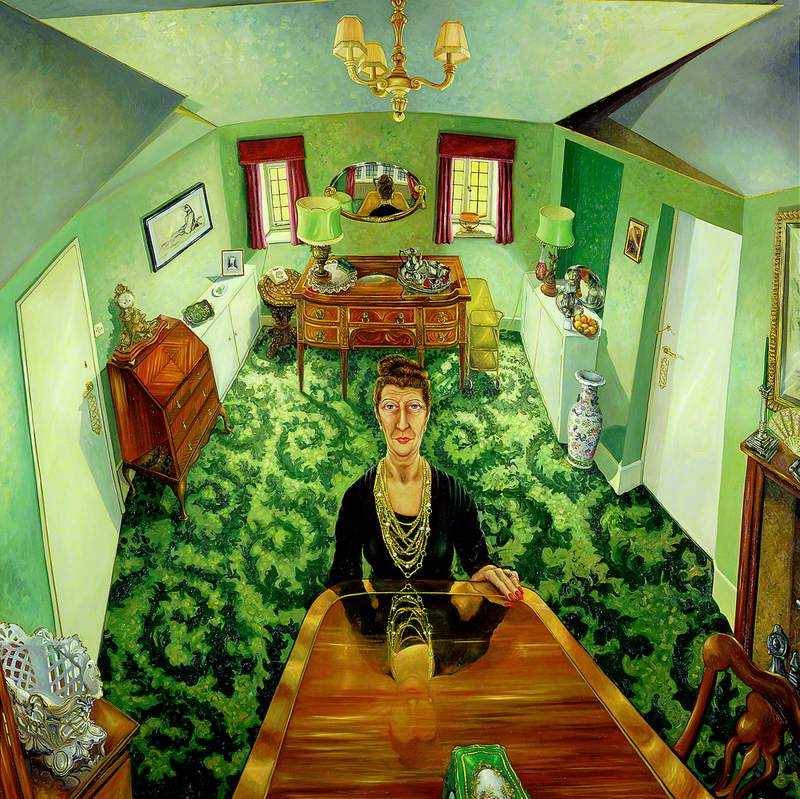
The disorientating perspective created by Green causes the viewer to tower over the woman in the painting, his mother. We are forced to look down on her, scrutinising every part of her and the life she leads. In the reflection of the mirror on the back wall, we see that the mother is the only person in the room, accentuating her solitude. Green's further use of reflections also introduces a theme of remoteness and unfamiliarity. Green's mother's face is painted ambiguously in the reflection of the table, without the reflection of her eyes. Eyes are known to be 'windows of the soul', and the fact that they cannot be seen in the reflection suggests that his mother's lavish appearance is not authentic to her true identity.
The artist slightly distorts the room as well, mimicking the effect of a fish-eye lens in photography. This effect heightens the mother's solitude and the seemingly worthless space surrounding her. Green additionally engulfs his mother in a room of green, the colour of wealth and envy, illustrating her dissatisfaction with her life despite her wealth. The sober and vacant expression on her face amplifies this idea that she is trapped in a warped cage of being a middle-class woman in the 1970s.
In contrast to the distorted perspective Green uses, the room itself is very balanced and symmetrical. There are two white doors opposite one another, possibly representing two opportunities of leaving this prison of a life. The colour white also has connotations of purity and peace, juxtaposing the shameful connotations of the colour green. Her desire to leave this life is criminalised in this artwork. The gold necklaces she wears appear to be long and heavy, weighing her down like shackles. Her black clothing suggests that she is mourning the missed opportunities in her past and being seen as more than a wife, mother and woman.
The painting overall illustrates the reality of middle-class life: having ownership of everything you desire, and the gnawing greed for more. The multiple layers of juxtaposition in the piece mimic the irrationality of constantly desiring more despite owning everything, and the symbolism reflects the complexity of human nature in terms of the emotions of shame, greed and jealousy.
Isabel Chan, second-place winner of Write on Art 2022, Years 10/11
